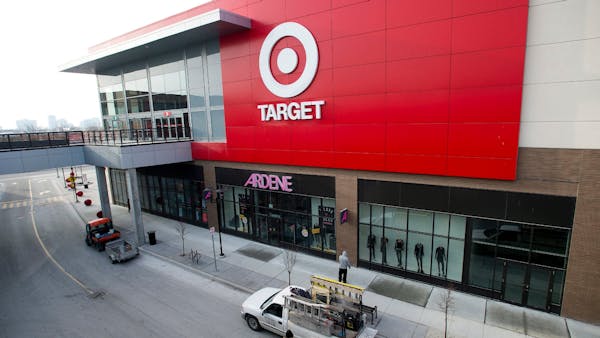Target's big expansion into Canada was marred from the start by poor execution — think high prices and empty store shelves, retail and international business analysts say.
The missteps culminated in the firm's announcement Thursday to exit the country in an epic flop.
Many Canadians live relatively close to the U.S. border, so Target was no stranger. Yet Target in Canada failed to meet the standards set by its U.S. stores, observers said Thursday.
"What I think it came down to was a lot of [Canadians] had shopped at Target in the U.S.," said Myles Shaver, a native Canadian and a professor at the University of Minnesota's Carlson School of Management. "They know what Target is. But the Target that they got was something different."
Different down to the details: Customers were upset that Canadian Targets didn't carry Cherry Coke like their brethren in the United States, even though Cherry Coke generally has more limited distribution in Canada.
Another part of the problem was higher prices, both perceived and real. Canadian shoppers, whether coming from Thunder Bay to Duluth or Toronto to Buffalo, knew Target as a low-price leader. But its prices were higher in Canada than in the U.S., as costs to run Target stores were higher across the border.
Target also arrived in Canada with higher prices than key competitors, said David Soberman, a marketing professor at the University of Toronto.
"The big problem that Target had was that it was not competitive with Wal-Mart, it was not competitive with [homegrown retailer] Canadian Tire and it was not competitive with Costco to a certain extent," Soberman said.
"Canadian Tire and Wal-Mart are really tough competitors, and if you make basic mistakes that business school tells you not to make, it will be really tough."
Yet Target fell short on one of the biggest basics: keeping the shelves stocked. "There were real problems here with stockouts, with empty shelves," Soberman said.
Perhaps the problem was that Target moved too fast by opening 124 stores at once in March 2013. "It sucked a lot of resources from the company," said Dave Brennan, a retail industry expert at the University of St. Thomas. Target might have done better by opening 40 to 50 stores in populous Toronto and southern Ontario, he said.
Target entered Canada by buying 124 Zellers stores, which were spread across much of the country. With only three distribution centers covering a wide geography, Target may have set itself up for failure, Brennan said. "It was a supply-chain problem."
Consumer satisfaction with Target plummeted during the chain's first year in Canada.
Forum Research, in a poll commissioned by the Toronto Globe and Mail, found that in May 2014, 18 percent of customers surveyed were "very satisfied" with Target stores. That was down from 32 percent roughly a year earlier, and by far the lowest satisfaction level of nine Canadian retailers included in the survey.
Even the physical layout of Target's stores might have hurt the company, analysts said. The former Zellers stores it purchased were mostly in malls. Target's competitors tend to be in stand-alone big-box outlets — as Target is in this country — and big boxes often have better access than mall stores.
In Canada, "it would be like going to Ridgedale to go to Target," Shaver said.
Target's price positioning in Canada had improved by summer of last year. A study in August by Kantar Retail found that Target Canada's prices were 3.9 percent lower than those at Wal-Mart Canada. In September, a survey by Piper Jaffray & Co., the Minneapolis investment bank, found that shoppers increasingly believed Target's prices were fair.
But by then, after such a weak Canadian launch, it might have already been too late for Target.
"Target had a great chance," yet it failed largely due to "management issues," Soberman said. Other U.S. retailers have failed in Canada. "But this is a fairly shocking one," he said.
Mike Hughlett • 612-673-7003

Minnesota factories see orders tank on continued trade uncertainty
'We don't want to lose this mine': Fear sets in for Iron Range miners as shutdown takes hold

UnitedHealth sues the Guardian, alleging defamation in coverage of nursing home care

